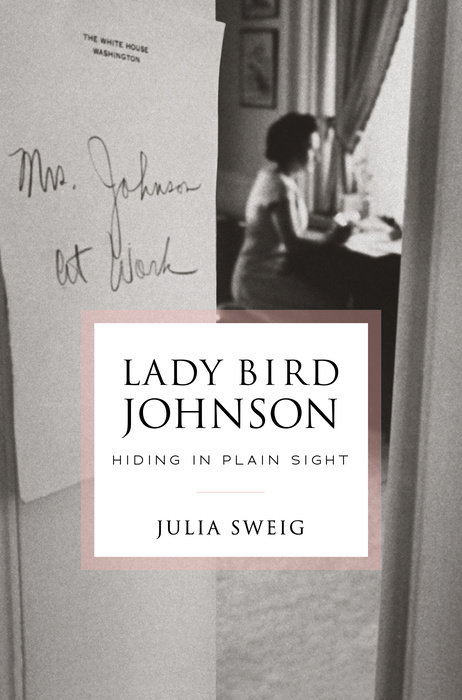Jo Freeman Reviews: Lady Bird Johnson: Hiding in Plain Sight
By Jo Freeman

Review of

Lady Bird Johnson: Hiding in Plain Sight By Julia Sweig; New York: Random House, 2021
xxiv + 533 pages plus 16 pages of photographs
Hardcover $32.00
Lady Bird Johnson appeared to be a typical political wife. She devoted her life to supporting her husband – Lyndon Baines Johnson – and nurturing his political ambitions, sometimes at the expense of her two daughters.
But underneath that prim exterior was a woman who had her own agenda which she carefully pursued through a slew of competing demands. She was, as the author points out, hiding in plain sight. Indeed, hiding was her strategy for success.
Born Claudia Alta Taylor on December 22, 1912 in east Texas, her mammie nicknamed her Lady Bird. It became her chosen name – often shortened to Bird. She was Lady Bird long before she met and married Lyndon Baines and acquired the name Johnson. LBJ became their brand, which was given to both of their children.
When she became First Lady as a result of JFK’s assassination on November 22, 1963, Bird began a taped diary. A few years after her death in 2007, the LBJ Library made the 850 entries public. This book is heavily dependent on that diary, interpreted and expanded by an experienced author with a research team. Consequently, it is 95 percent about her 62 months as First Lady, with minimal material on her earlier and later life.
Life with Lyndon was a political as well as a personal partnership, though Bird was always the junior partner. She had family money; he had family connections. Together they elected him to Congress in 1936 and the Senate in 1948. She used her inheritance to buy an Austin radio station in 1943 and a TV station in 1952. The fact that her husband was in the US Congress didn’t hurt when it came to getting licenses and advertising revenue. He made the couple powerful; she made them rich.
Bird set up her own office in the East Wing of the White House with her own staff and projects. The most prominent one was Beautification, a project she pursued with help from Interior Secretary Stewart Udall. Today we would call her an environmentalist, but her concern with expanding the national parks and opening park/play spaces in less attractive areas of Washington D.C. had to hide under the rubric of prettiness – a proper concern for a first lady.

President Lyndon B. Johnson and Lady Bird Johnson walking through a field of flowers. LBJ Library photo by Frank Wolfe.
Pages: 1 · 2
More Articles
- Jo Freeman Writes: Kennedy vs. Trump at the Libertarian National Convention
- National Archives Records Lay Foundation for Killers of the Flower Moon: The Osage Murders and the Birth of the FBI
- Nichola D. Gutgold - The Most Private Roosevelt Makes a Significant Public Contribution: Ethel Carow Roosevelt Derby
- Oppenheimer: July 28 UC Berkeley Panel Discussion Focuses On The Man Behind The Movie
- Selective Exposure and Partisan Echo Chambers in Television News Consumption: Innovative Use of Data Yields Unprecedented Insights
- Jo Freeman Reviews Thank You For Your Servitude: Donald Trump's Washington and the Price of Submission
- "Henry Ford Innovation Nation", a Favorite Television Show
- Julia Sneden Wrote: Going Forth On the Fourth After Strict Blackout Conditions and Requisitioned Gunpowder Had Been the Law
- Jo Freeman Reviews: Gendered Citizenship: The Original Conflict Over the Equal Rights Amendment, 1920 – 1963
- Journalist's Resource: Religious Exemptions and Required Vaccines; Examining the Research






